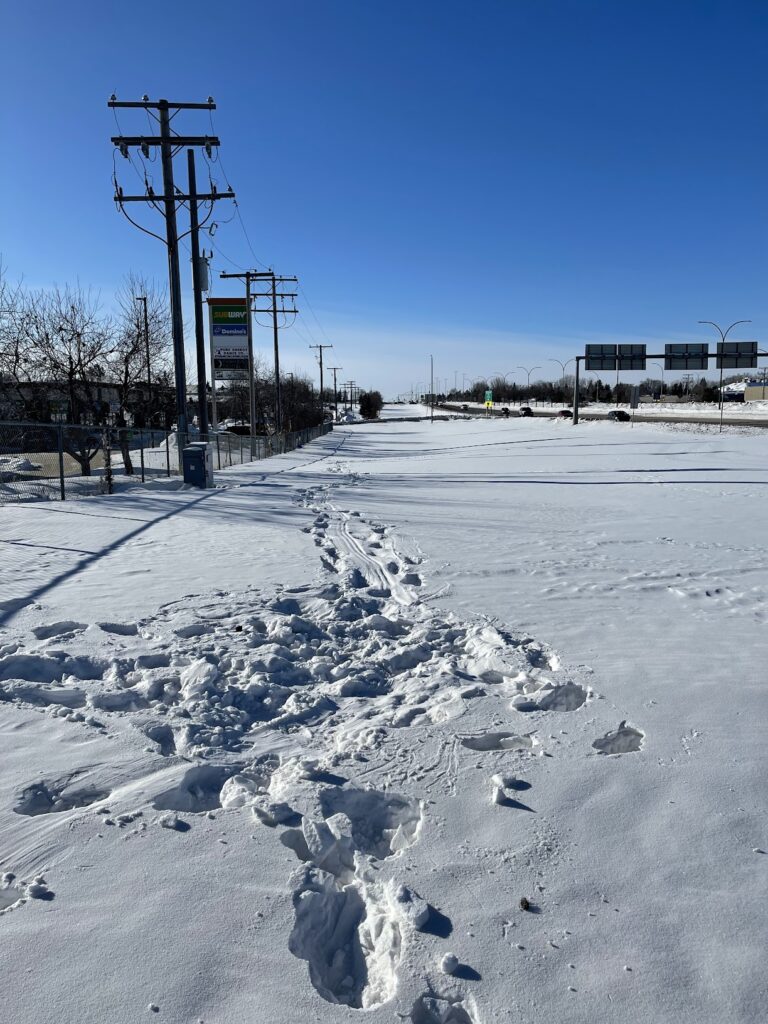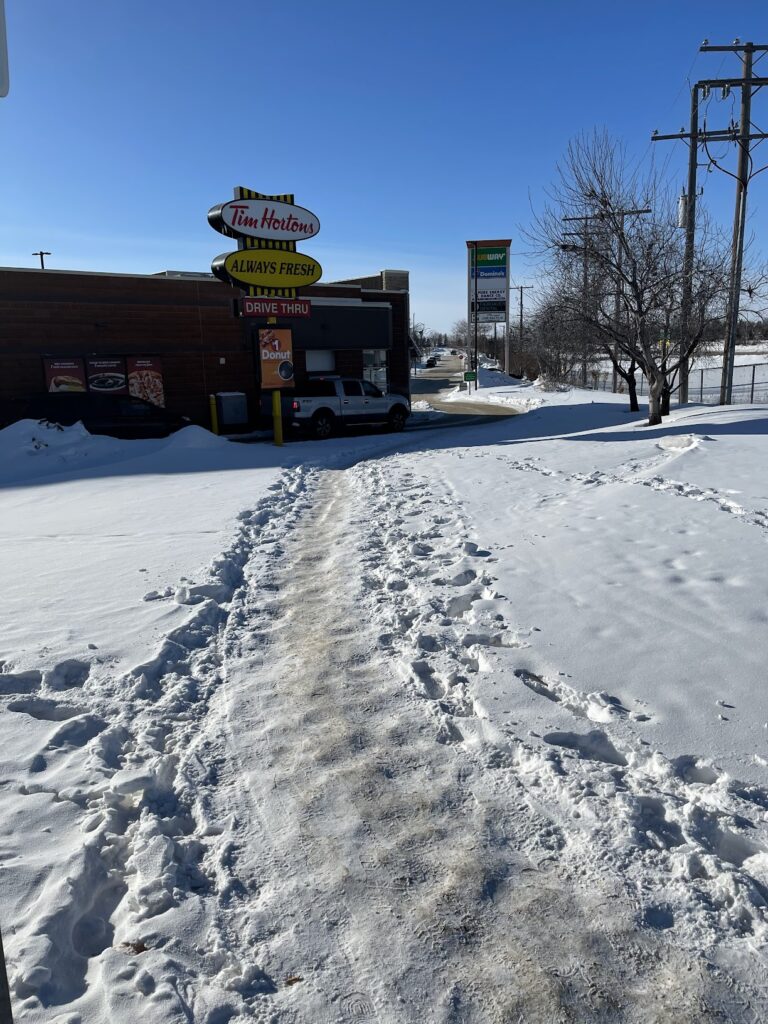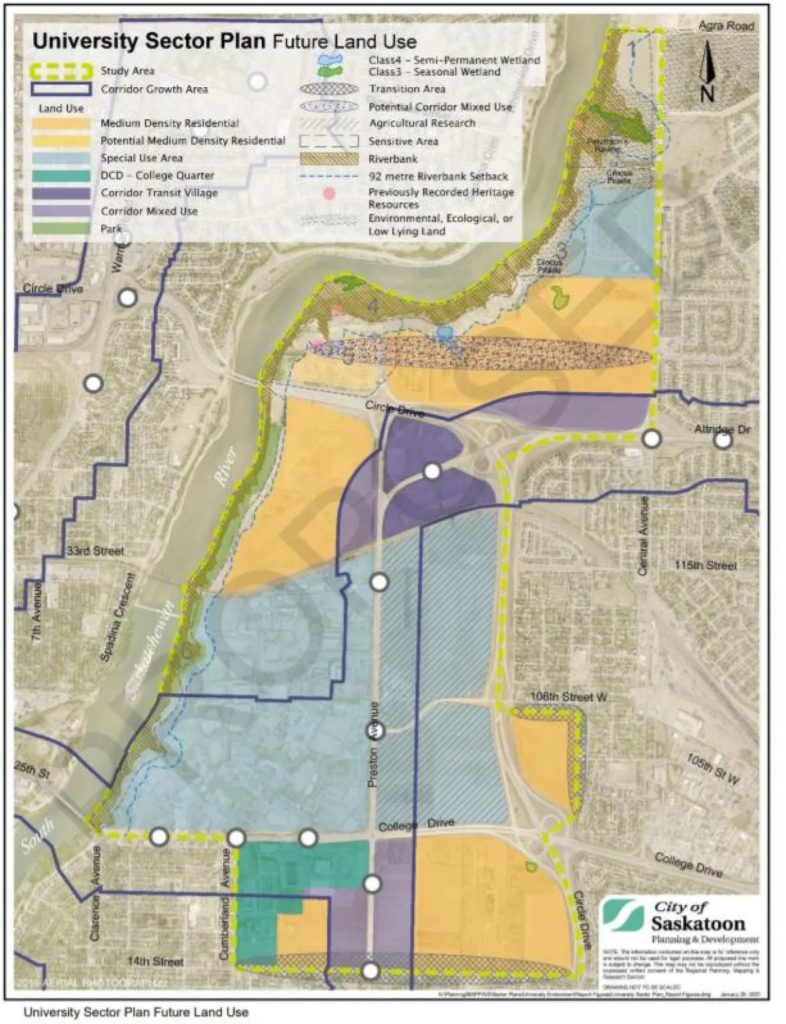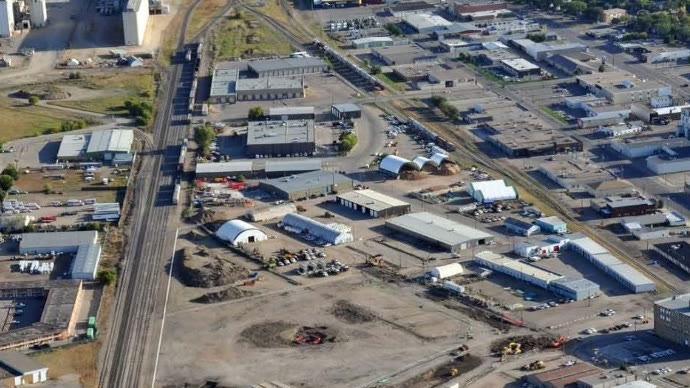22nd Street has always been Ground Zero for pedestrian safety in Saskatoon. A long, high-speed 6-lane stroad with big gaps between safe crossings, poorly maintained sidewalks and intersections, as well as a major rail line crossing, all right through the middle of neighbourhoods with a high level of pedestrians who need access to schools, hospitals and shopping all along the corridor. We’ve covered this corridor a lot, from a survey of winter walking conditions in 2018 to solutions we proposed to help fix 22nd Street.
Luckily, the last several years, often helped by the efforts of ex-Ward 2 councillor Hilary Gough, the corridor has seen a large number of pedestrian safety improvements, many of which we’ve covered here, from fixes on 22nd itself:
to many projects, especially sidewalk infill, on the adjacent streets of 23rd and 21st. Those parallel streets, as we discussed in our original coverage, were safer for walkers in terms of traffic volume and intersection navigability but had no sidewalk coverage for large numbers of blocks, a huge problem for pedestrians who were stuck between the devil and the deep blue sea when it came to deciding where to walk.
And, probably the biggest project along 22nd, the West-Central Multi-Use Corridor, a project to make a safe active transporation path along the CPKC rail line that crosses 22nd diagonally around Avenue F.
A big move in 2025 has been a focus on 22nd as it moves past Circle Drive and into Confederation Park/Fairhaven and neighbourhoods west. The west-side suburban neighbourhoods have always suffered from poor intra-neighbourhood walking access, with both 22nd and Circle acting as hard barriers to connectivity. Circle Drive, in particular, restricts access to the Downtown core, with pedestrians and bikers funnelled to a singular path on the west side of 22nd or a handful of poorly maintained tunnels under Circle.
The next several years will see positive change to those problematic sections of 22nd west of Avenue X and into Confederation Park, Fairhaven, and Kensington.
First, the construction of a south-side sidewalk from 22nd and Witney Avenue to connect up to the pedestrian overpass on Circle to make it easier for walkers from the south side to avoid having to cross 22nd at Avenue W against heavy traffic.
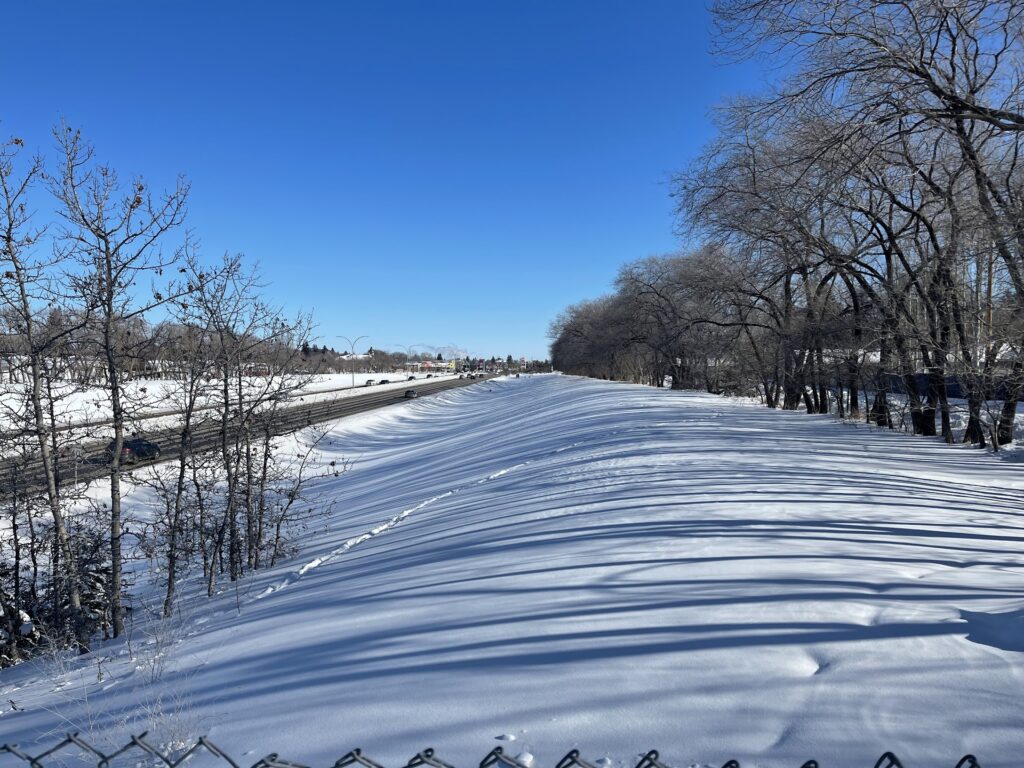
Second is the improvement of the southwest pedestrian infrastructure at the corner of Diefenbaker and 22nd and the addition of a pathway from Diefenbaker to Confederation Drive (unfortunately concurrent with the addition of a third car lane). This is a hugely important and highly trafficked intersection for pedestrians, really providing one of the few safe crossings of 22nd west of Circle and it’s a disgrace that it’s nearly half-a-century of waiting for a sidewalk on this section of street. This area is filled with desire paths as pedestrians are force to cut through fast food drive through lanes and muddy and snowy medians to try and get to their destination.
